You don't bore me, Alice
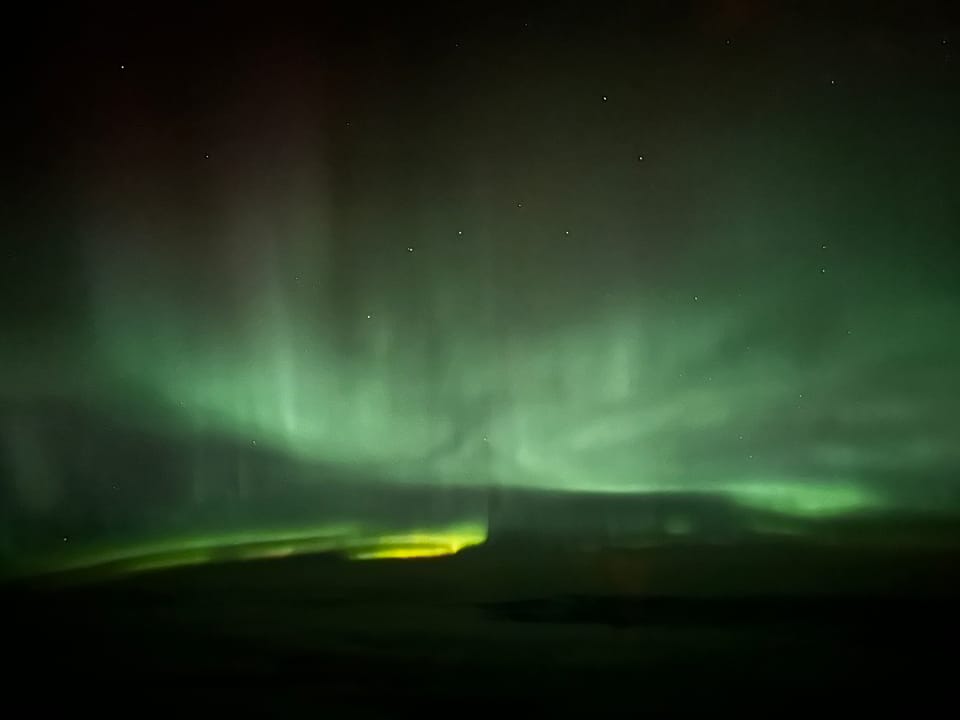
My bucket list is ever changing, and I inadvertently fulfilled an item last November— but it starts the November before that.
On my first Pacific crossing, another First Officer (and good friend!) pointed out the Northern Lights to me. I was a little let down, and at first I didn’t believe him. It more or less looked like a silver cloud along the horizon, “but it shows up better with a phone camera.” So I pointed and let the iPhone’s long exposure happen, revealing a pathetic wisp. Bummer.

I didn’t really think much more about it, unless I saw pictures online. I would scroll past them quickly, because I wanted to experience it for myself and not just see images. Back to this past November, I still wasn’t thinking about it. But we were finishing a long flight from Seoul to Anchorage, and I took the last rest break. Awaking from my nap, I danced in the galley while I heated up my dinner and ate right there— sometimes it’s nice to stretch my legs and ponder existentialism over high sodium meals, but I digress. I came back to the flight deck to change back into my uniform (what?! I’m a freight dawg; of course I change the second we get to altitude), but I was dazzled by what I saw out the windscreen.
In its full prominence was a dancing menagerie of lights, greens and yellows and even hints of electric blue. I sat in awe, witnessing a miracle that is, in fact, always happening to the earth above and below at the poles, so to speak.
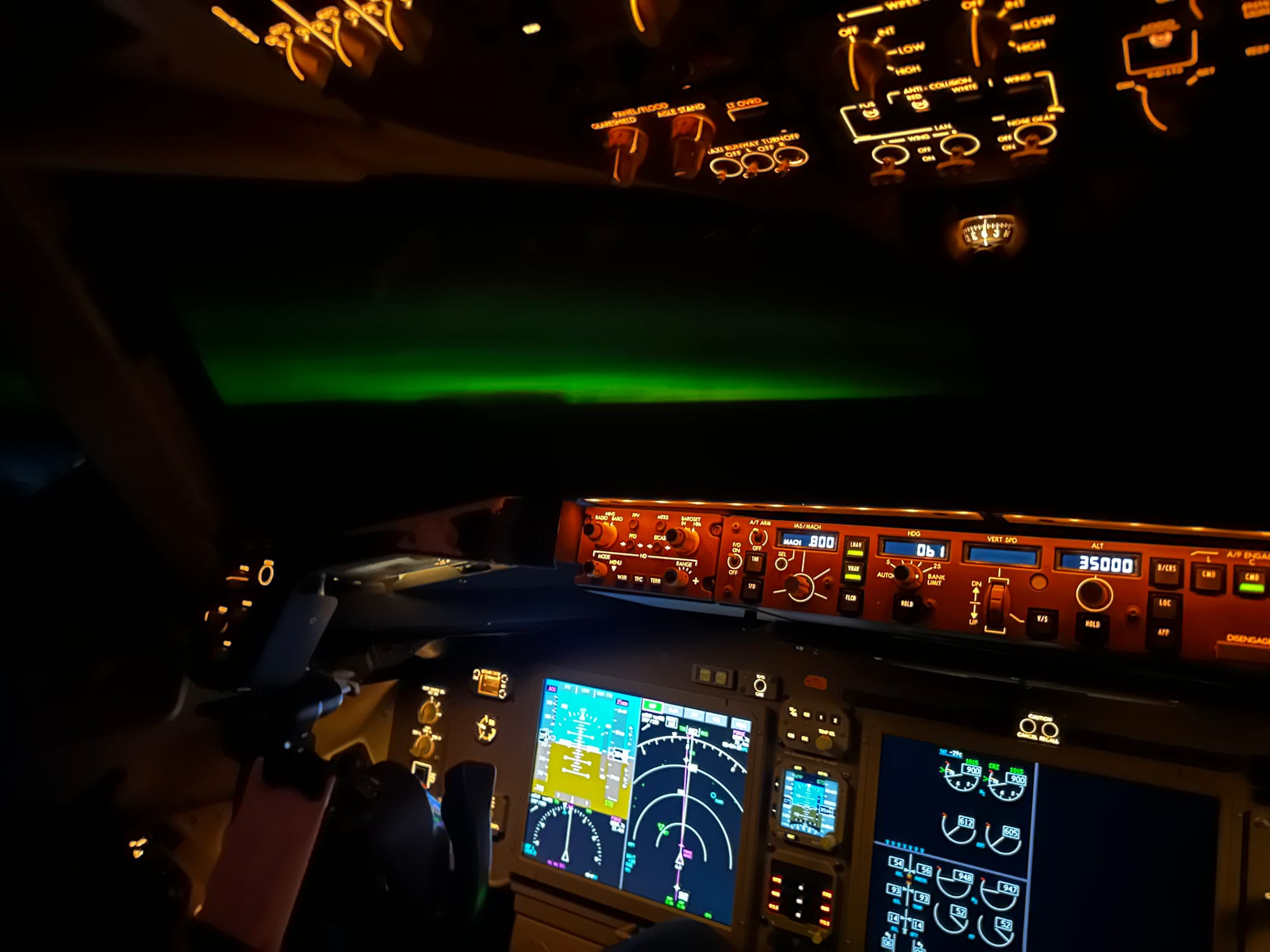
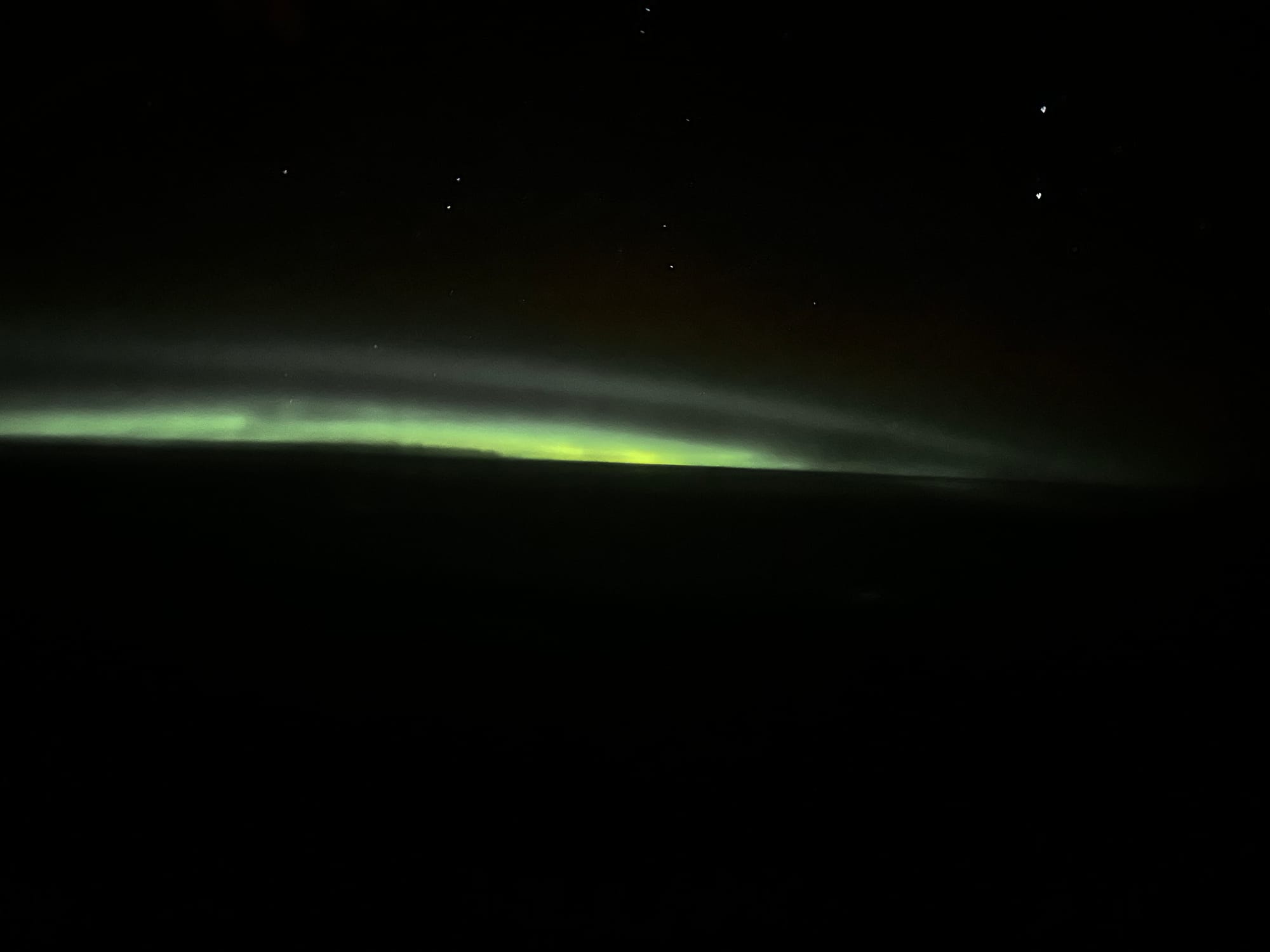
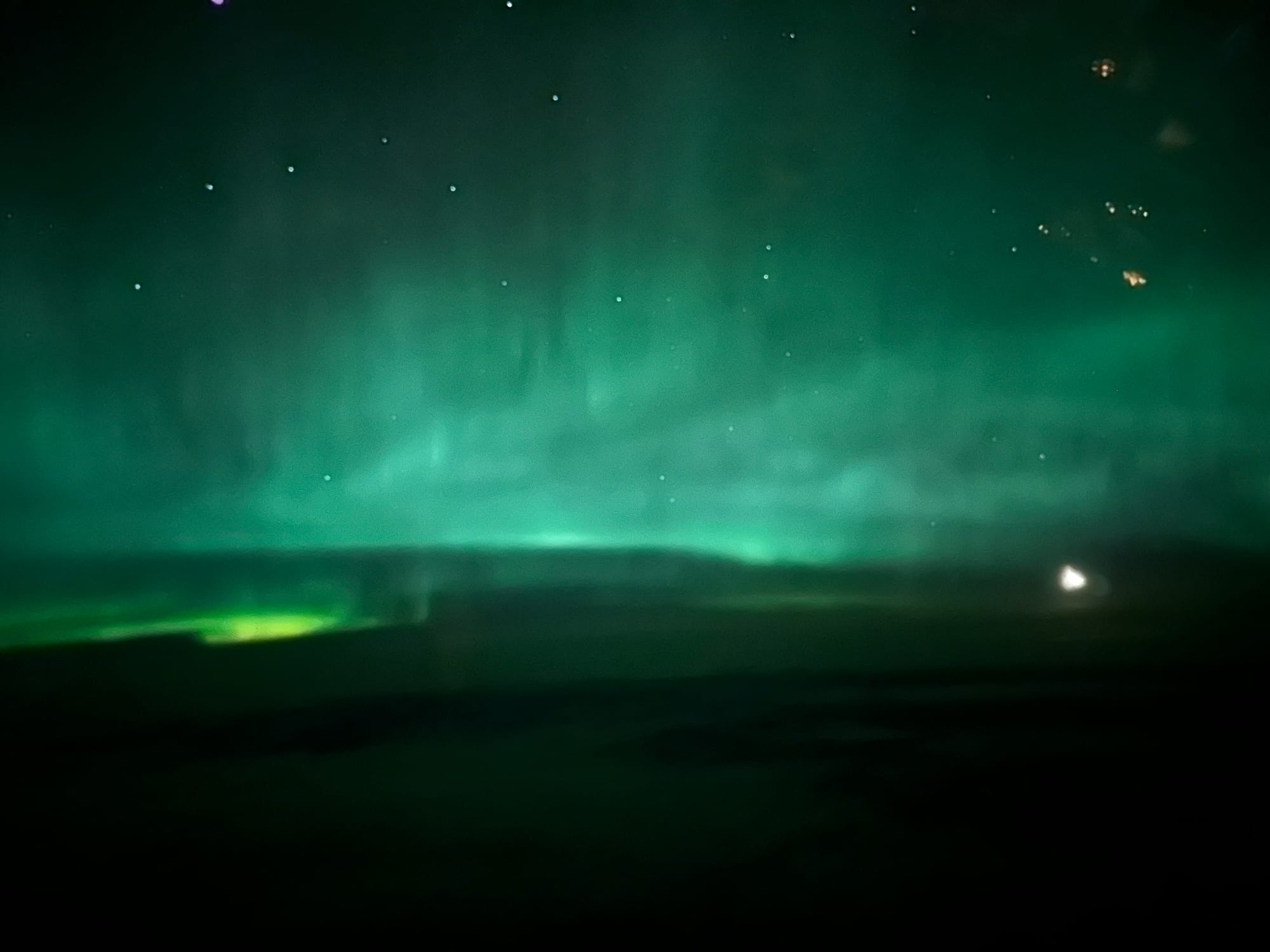
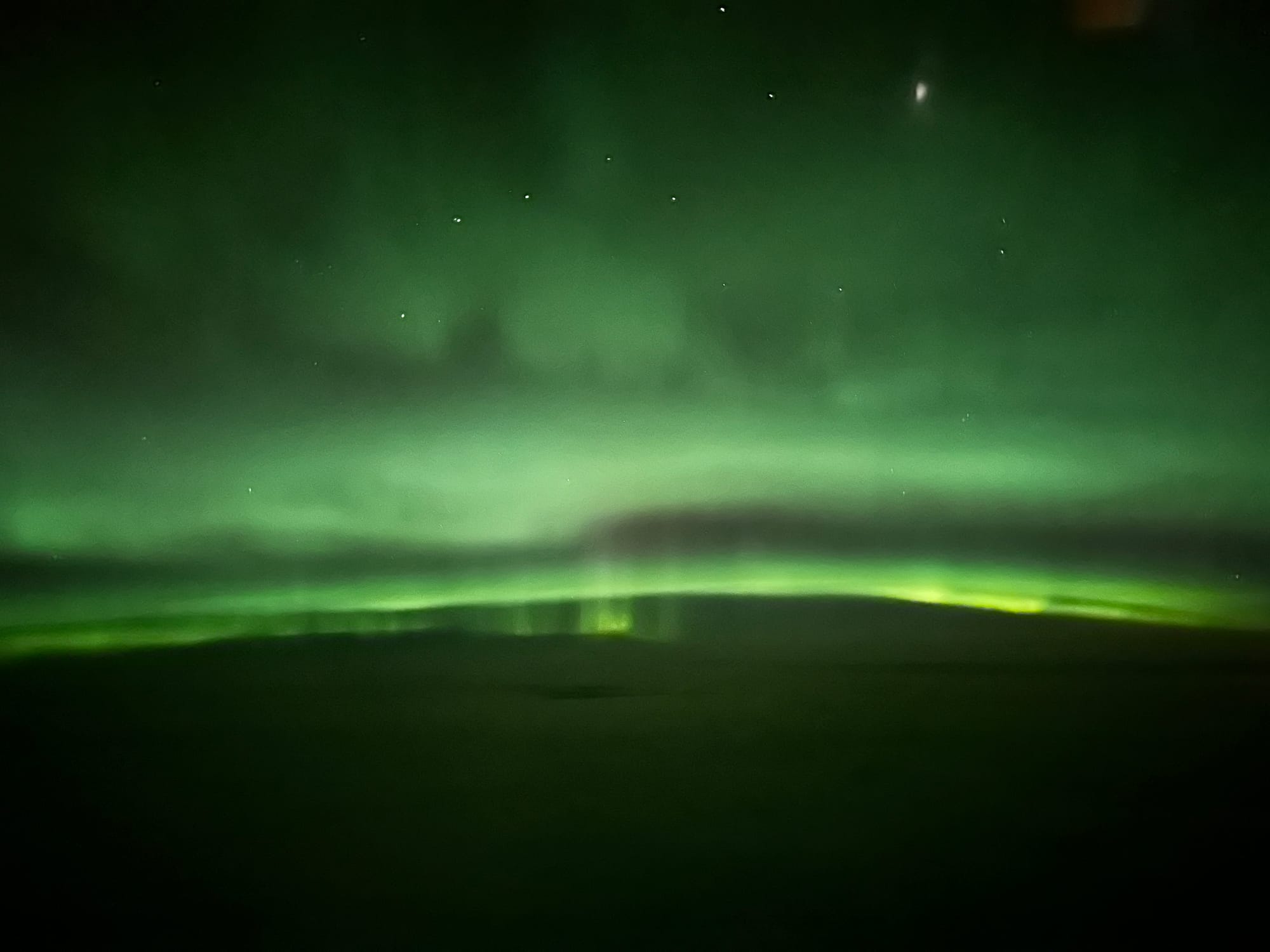
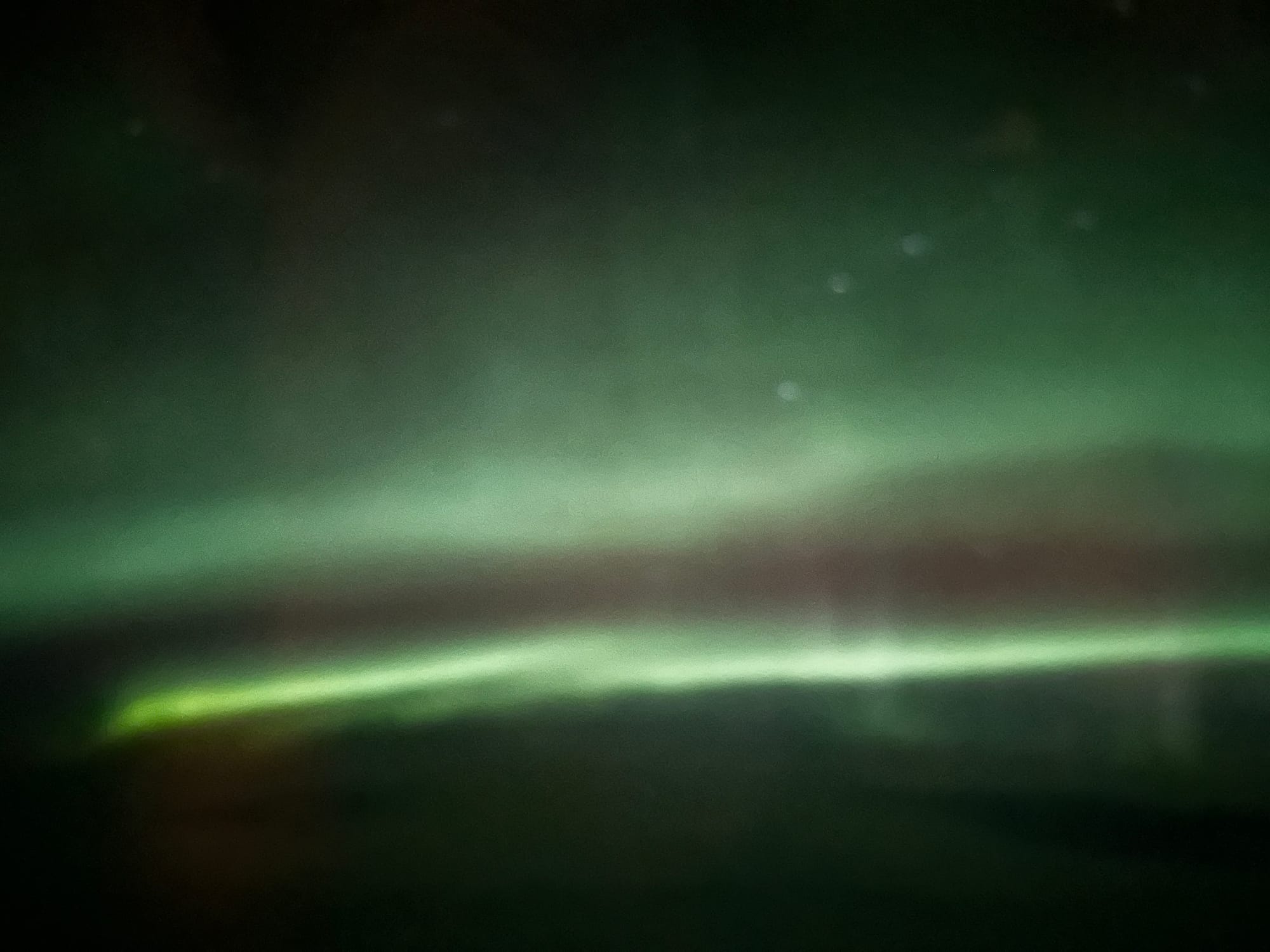
For this viewing in November 2023, it was FAR more spectacular with the naked eye.
So, what is the aurora? The sun is constantly throwing out charged particles in a fit of fusion, which are captured in the earth’s ionosphere. They migrate towards the magnetic poles of our planet, becoming visible at night. It’s a gamble if you see it, since those pesky clouds can get in the way. The sun goes through an 11 year solar cycle, and space physicists think either 2024 or 2025 could be the peak. But our friends at the University of Alaska Fairbanks have a great website that forecasts the KP Index, or geomagnetic activity. If I remember before the flight, sometimes I’ll check to see the probability— but I also like being surprised.
While it’s fun to nerd out over what causes the aurora, I wonder if this is how lore and myths are formed. I can’t help but think about my Swedish ancestors from way up north (like, we’re talking damn near the Artic Circle, not tropical Stockholm) seeing this, what stories they could’ve conjured up to explain such a marvel in the sky. As I was glued to the window, listening to the crew brief their descent and approach plans, I watched the lights move with an eerie but marvelous flow— some looking like a column, perhaps a portal to another realm, others looking as close as a few miles away. It was yet another reflection imbued by flying that we’re mere specks of cosmic dust in a meaningless abyss, and that I, too, can dance like the light within me. If you’re groaning by how cheesy that was, then I’ve done my job.
I still haven’t seen them from land, thus perpetuating the bucket list, and my time seeing them in the air is coming to a close— that midnight sun is quickly making her way to Anchorage, and soon it will be mostly daylight on our evening flights. Perhaps I’ll make a pilgrimage one day to the vastness of northern Sweden and view the aurora, but until then I’ll watch them from my homeland in the sky.